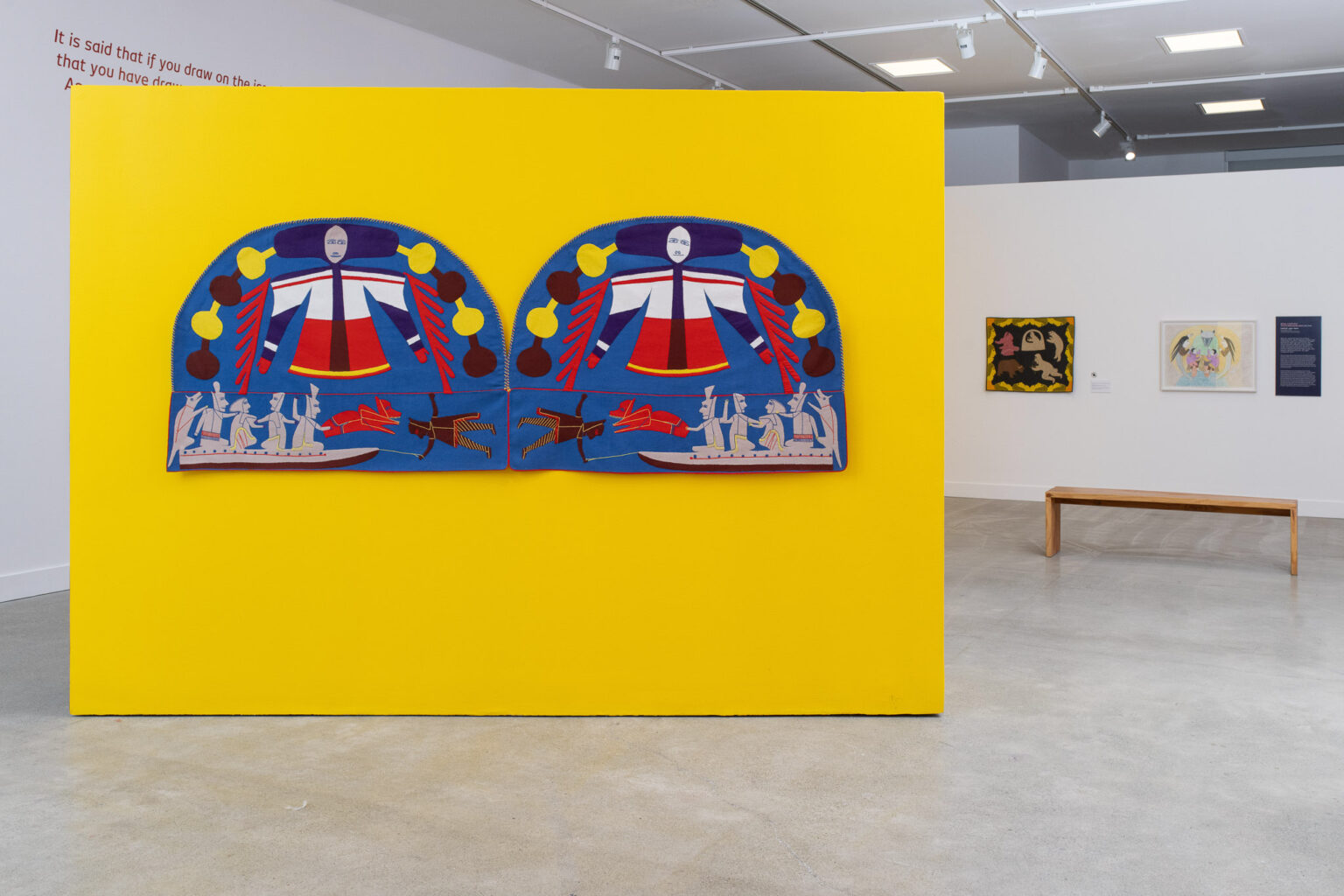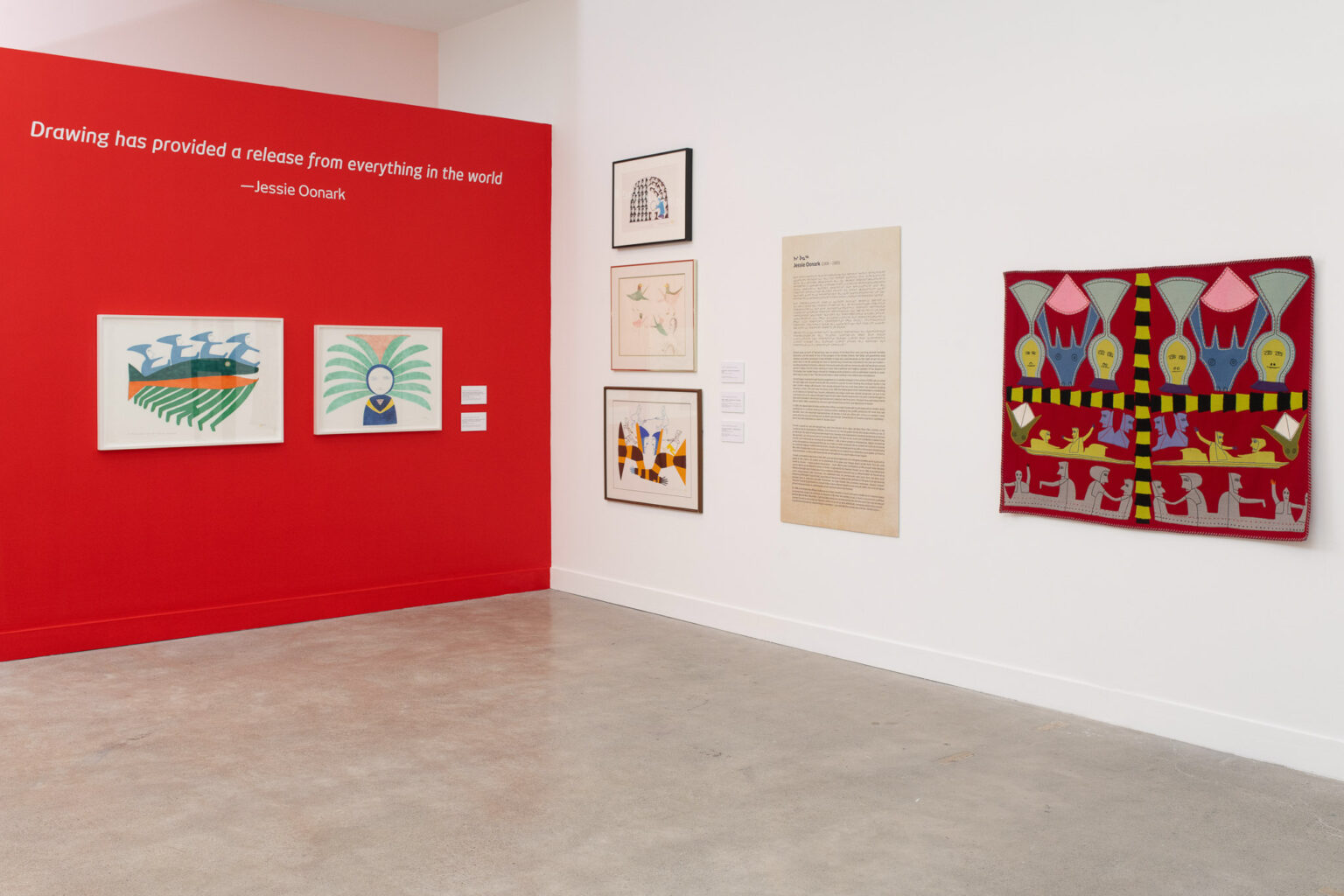
ᑕᑯᒃᓴᐅᔪᒻᒪᕆᒃDouble Vision
Nanaimo Art Gallery, British Columbia
July 13–September 15, 2024
by Melinda Kachina Bige
ᑕᑯᒃᓴᐅᔪᒻᒪᕆᒃ Double Vision is a touring, multigenerational art exhibition that features the art of three dynamic women artists from Qamani’tuaq (Baker Lake), NU: Jessie Oonark (1906–1985) and two of her daughters, Janet Kigusiuq (1926–2005) and Victoria Mamnguqsualuk (1930–2016). I saw the exhibition at the Nanaimo Art Gallery, situated on the land of the Snuneymuxw people in so-called British Columbia. Upon entering, I was greeted by a territorial acknowledgement by Elder Gary Manson in hul’q’umin’um, the language of the Snuneymuxw, displayed as wall text. Throughout the quiet of the space, the echoes of hul’q’umin’um words layered blankets of positionality around me. Walking through, I moved from the language of the immediate land and place to Inuktitut, the language of the artists, carefully placed first before the English text. I quickly got a sense that Indigenous Peoples are prioritized and respected in this space.
There, three powerhouse artists shared their visions through dynamic textiles, collage, drawings and prints. Oonark’s print Woman (1983) greeted me immediately. The figure in this stonecut and stencil print is shaped by black outlines and details, a yellow body and a navy blue parka. Elsewhere, Mamnguqsualuk’s work was influenced by her Grandmother Natak’s stories. Her textile piece The Woman with Too Many Children (2001) made me laugh, as I can relate to the gestures and busy activities depicted in the appliqué. A truly universal mother’s moment.
Janet Kigusiuq’s colourful collages were among the most striking aspects of the exhibition as her enthrallment with the “in-between time” of morning and night blessed her artistic vision. Her representation of Kitikat, NU, where her family camped, came through in the colour; I could easily sense Kigusiuq’s feelings of awe and hope while being on the land. Kigusiuq and her art serve as a powerful vessel for generational knowledge transmission, while the multigenerational aspect of the show made this a must-see exhibition for me.
Melinda Kachina Bige is a Nehiyaw, Dene ts’ekwi from the Denesuline lands of Lutsel K’e, NT. She is former Chair of Kwantlen Polytechnic University’s (KPU) Indigenous Studies department, where she created new curriculum and programming. Bige also spearheaded the online journal Octopus Spirit, which showcases work by emerging Indigenous academics and artists. Bige is now Associate Dean of the Faculty of Arts at KPU.

